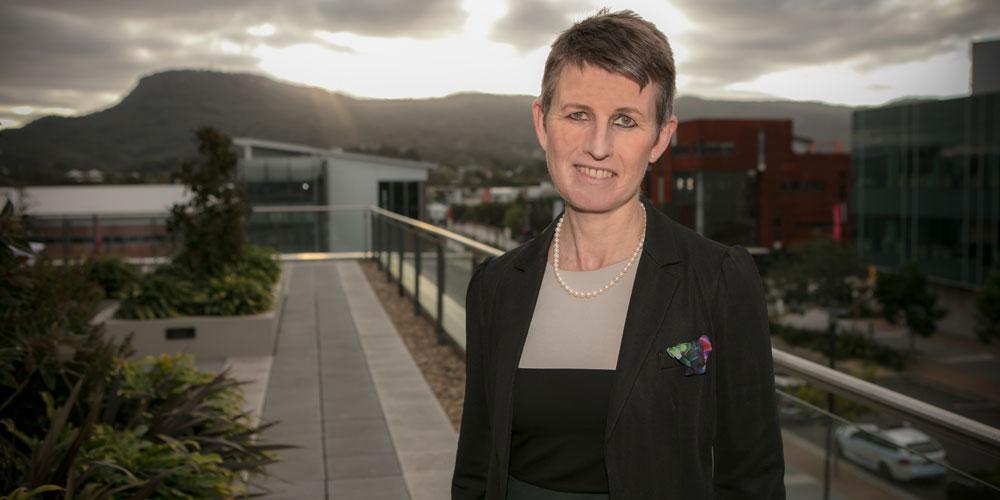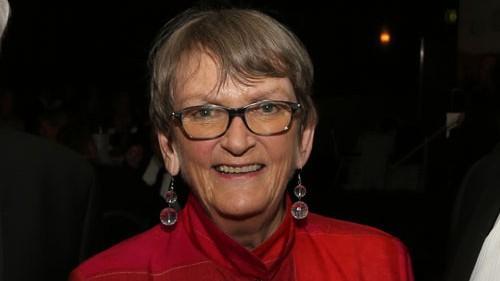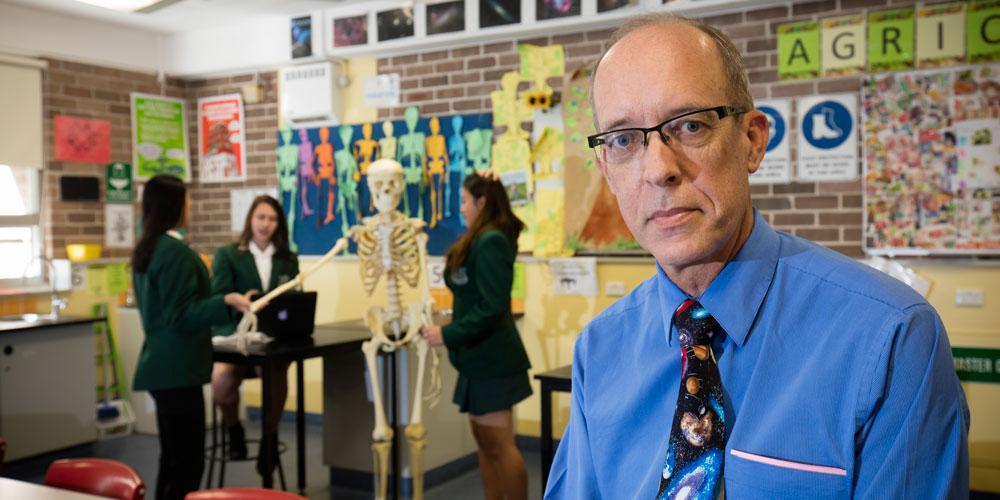Blazing a trail
Those leading the way on workplace gender equality
When I had my third baby, I was back at work in a month, baby in tow. His portable cot in my office became a regular stopover for my colleagues while I got a tri-weekly paper to the printers by deadline.
When he was old enough for childcare at eight weeks, the cot was packed away, and I spent my breaks in the small cleaning closet expressing milk in preparation for the next day.
Fifteen years on, not much has changed. There may have been advances like work-based childcare, flexible working hours and telecommuting, but for many women, remaining relevant and respected in the labour force, means making some major sacrifices.
For me it meant leaving the newspaper office and diving into a career as a freelance journalist, with the highs and lows that come with working for yourself.
According to the Australian Bureau of Statistics, the participation rate of women in the Australian workforce is around 59 per cent, compared to men at around 71 per cent. Although it has risen in the past 40 years from 43.4 per cent, the ABS notes that if Australia is to meet its G20 goal of reducing the gap in workforce participation rates between men and women by 25 per cent by 2025, a lot needs to change.
Former Prime Minister Paul Keating said in 1994 “women’s skills are essential to the future growth of the economy” and as the world moves towards a more globalised workforce this is more true than ever. Back then, Keating believed the major problem facing women wanting to work was the lack of childcare. There may be more options available now for women in caring for young children, but it’s not reflected in their work participation rates.
In fact, the main breadwinner in a house is still more likely to be a man, women generally lean towards working part-time and in comparison to other OECD countries, the employment rate of women with children is very low.
There are more women managing full-time work, family life and career advancement, but the number is still woefully low. Only 37 per cent of managers in Australia are women.
Dr Bronwyn Evans is one of that 37 per cent. In 2017, Dr Evans took on a governance role at International Organisation for Standardisation as the vice-president (finance) in addition to her role as CEO of Standards Australia, a role that she has held for four years. She has spent 35 years in the engineering industry, holding executive positions at GE Healthcare and Cochlear and has been on a number of boards including John Holland Limited and the Medical Technology Association of Australia.
In 2014 and 2015, the Honorary Fellow of the University of Wollongong was included as one of Australia’s 100 most influential engineers and in 2016 was recognised as one of Australia’s 100 Women of Influence.
She admits that despite her own success in a very patriarchal industry, there is still the proverbial glass ceiling.
“Absolutely there is a glass ceiling,” she says. “It’s due to a whole range of psychological things. There is almost a sense of questioning that [if women do get into senior roles] that this is the role for which they are ready. We don’t need to fix the women in the industry. We need to understand the fact that the institutional practices out there are challenging.
“Women are much tougher on themselves in the workplace than men especially in regards to self-assessment. In non-western countries, promotion is often more about class and money than gender. [Promotion to senior roles] is more about how our societies have evolved, so rather than looking at what we did historically, we need to ask what can we do now [to help women succeed], we need senior people helping to pull women up and telling them they can do it.”
Dr Evans was one of the first women to graduate from the University of Wollongong with a Bachelor of Engineering (electrical) in the late 1970s and says she was fortunate in her career to have a number of good sponsors and mentors among men with whom she worked as a young engineer.
“I worked at Tallawarra Power Station [just before it shut down] and there were not many women on the turbine floor back then. We were a curiosity and I feigned an interest in things like fishing and football to fit in,” she says.
"We don’t need to fix the women in the industry. We need to understand the fact that the institutional practices out there are challenging"

Dr Bronwyn Evans
“I never experienced any discrimination, nothing overt anyway. No-one ever said I shouldn’t be there or be in that industry.”
UOW alumna Justice Jane Mathews AO was also a pioneer in her field, and was the first woman to be admitted to full judicial office in NSW when she was appointed to the District Court in 1980. Before then, she was a barrister, and was often the only woman in a male-dominated environment.
“I became really aware of the low number of women in the law when I had to give a paper on the subject in 1982, and I did a great deal of research on the subject,” Justice Mathews says.
“It brought home to me the problems women were having in the field. There was a very low glass ceiling. There were hardly any women at the bar, which is the main stepping stone to the bench”.
In 1987, Justice Mathews was the first woman to be appointed to the NSW Supreme Court.

Justice Jane Mathews
“It was initially a lonely place,” she says. “It was all men and very conservative at that time. It was not overtly hostile, but I was definitely an outsider.”
Like Dr Evans, Justice Mathews said she was fortunate to have a mentor who helped her navigate the obstacles and challenges.
“The position has improved significantly since then, but women still have a long way to go to achieve equality, notwithstanding the fact that more women than men have been graduating in law for decades now,” Justice Mathews says.
“At least in our top court, the High Court, three of the seven judges are women, and we have a female chief justice. But it is such a small court that a single appointment significantly affects the statistics.
“In the state courts the same pyramid structure that we have seen for decades still largely applies: the higher you go, the lower the proportion of women judges on the courts.”
It is for these reasons that Justice Mathews considers it is important more women are encouraged to go to the bar.
“Women are still choosing not to go to the bar because it is not perceived as family friendly,” she said.
“Steps have recently been taken in an attempt to address this issue, but there is little flexibility in court hours, which can create a problem. At least in these days of electronic communication, more work can be done at home, and I think that there is a lot of support for more change. We are moving in the right direction, but it is much slower than I had hoped.”
Like law, STEM (Science, Technology, Engineering and Maths), has also made a concerted effort to attract more women into the various industries, especially at a grassroots level in primary and secondary schools.
Dr Ken Silburn, the 2016 winner of the UOW Alumni Award for Professional Excellence, has been at the forefront of science education for many years. In 2015, he was awarded the Prime Minister’s prize for science for leadership and excellence in teaching in secondary schools after founding the iSTEM (Invigorating Science, Technology, Engineering and Mathematics) program in 2012.
Dr Silburn says although more girls are becoming interested in the STEM subjects at school, there are still more boys doing physics and chemistry.
“There is a belief somewhere that girls are not good at maths and physics, but there is absolutely no basis for that at all,” he says.
“I think we are actually showing girls what is out there [in science careers]. The NSW chief scientist is female, as is the head of Google and Microsoft. In the past we [teachers] pushed to get girls into STEM because girls needed that opportunity. Now, if we don’t give the girls the opportunity, all the jobs that will be available in 15 years, girls won’t be able to do. If girls aren’t doing engineering we are losing half of the intelligence.”
"There is a belief somewhere that girls are not good at maths and physics, but there is absolutely no basis for that at all"
Tackling gender inequality, and inequity, in male-dominated fields such as STEM, is now being addressed by a number of industries. The Minerals Council of Australia recently released a report on attracting and retaining female employers, which identified four major areas as leading practice in creating an environment conducive to achieving this goal. These areas included assessing recruitment practices to encourage female workers, particularly in non-traditional roles; creating employment opportunities for a relocated spouse; career development programs for women; and equal pay entitlements.
The report also identified initiatives like attractive parental leave provisions and flexible return to work programs; telecommuting; job sharing; and on-site facilities for breastfeeding and childcare would support working women, especially those with childcare responsibilities, to remain in the industry.
As far back as 2008, the NSW Government Department of Social Services identified there were a number of impediments to female advancement within the public service in its report The Leadership Challenge: Women in Management.
These included short-term business drivers; cultures that undermine the female presence through narrow notions of ‘cultural fit’ and masculine leadership constructs that exclude women; complex dynamics around managing strategic relationships; and work/life balance issues.

Dr Ken Silburn
The results suggested women find fewer, narrower, more hazardous and personally costly paths to senior levels of their respective industry, and these career choices often have much wider effects, which ultimately undermine the potential and quality of business leadership. Yet the research also shows how much difference innovative and committed leadership can make.
A pilot scheme by the Athena SWAN (Scientific Women’s Academic Network) Charter in Australia is putting one such innovation to the test. It’s called SAGE (Science in Australia Gender Equity) and it aims to improve gender equity and gender diversity in Australian science, technology, engineering, mathematics and medicine (STEMM). UOW was one of the first universities in Australia to take part in the program, led by Deputy Vice-Chancellor (Research and Innovation) Professor Judy Raper.
The accreditation and improvement program recognises commitment to advancing women’s careers by committing to upholding 10 principles of gender equality, including preventing the loss of women across the career pipeline, tackling the gender pay gap, addressing the negative consequences of short-term contracts and stamping out discrimination against transgender staff.
Established in 2005 in the UK by the Equality Challenge Unit the Athena SWAN Charter is governed by 10 principles of equity and inclusion, and provides an evaluation and accreditation framework to identify and address gender inequity in science organisations.
Organisations which participate in the charter must accept these 10 principles, which include things such as advancing gender equality in academia, closing the gender pay gap, removing the obstacles faced by women at major points of career development and progression, making and mainstreaming sustainable structural and cultural changes to advance gender equality.
There are now more than 40 institutions participating in the SAGE Pilot including 30 universities, six medical research institutes and four publicly funded research agencies.
Dr Silburn says encouraging women into the research side of STEM is probably the biggest challenge and schemes like the SAGE Pilot will hopefully address this.
“Research is a long process. It’s not something you can just walk into. If you have children and take a couple of years off, by the time you go back, everything has changed,” Dr Silburn said.
“Technology has changed so fast and that is a problem. From a teacher’s point of view, it is the most exciting time. We have all these great things happening – Mars travel, space, health and vaccinations, all the things around global warming and sustainability. That’s going to be the big change and STEMM will have to solve a lot of problems around that.”
Bachelor of Engineering (Electrical), 1982
Doctor of Philosophy (Electrical Engineering), 1998
University Fellowship, 2012
Justice Jane Mathews AO
Honorary Doctor of Laws, 1993
Master of Arts (Hons) (Clinical Psychology), 1995
Dr Ken Silburn
Doctor of Education (Education), 2009
Keeli Cambourne
Master of Arts (Journalism), 1993
Graduate Diploma in Education (Secondary), 2013